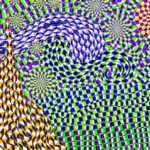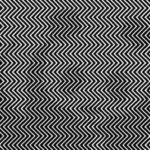Head-Scratching Optical Illusions That Stump Everyone
1 Dizzying Dots

If you stare at this photo, you probably see multiple black dots that seem to appear and disappear at random. However, there are actually 12 black dots present in the photo at all times.
While you can stare at one dot directly, the dots in your peripheral vision will never be completely in focus. Therefore, it’s impossible to see all 12 dots at one time.
2 Out Of Focus

This optical illusion requires a bit of patience. If you stare at the image for roughly 30 seconds, the colors will disappear entirely. The optical illusion represents how the brain works.
Over time, the sensory neurons will filter out certain information, as your mind has deemed that it’s not essential or threatening. Therefore, your brain allows you to focus on more important things. Presented so plainly, however, the process feels quite alarming.
3 Up Or Down?

This photo doesn’t look that trippy at first glance, but it slowly becomes more and more head-scratching the longer you stare at it.
In this picture, the cat can look like it’s both going down a set of stairs, and walking up a set of stairs. The longer you stare, the more the direction will seem to change.
4 The Many-Legged Elephant
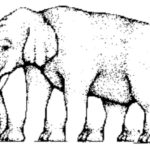
This photo is designed to mess with your eyesight. While the elephant looks normal at the top, things fall apart when your eyes move down to his legs.
Just how many legs does this elephant have? It looks like 5 at the very least, but the legs continue to change the longer you look at the photo. However, the photo is purposefully drawn to mess with you, making you question what you’re really seeing.
5 Slanted Or Straight?
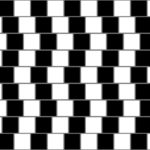
This optical illusion is a favorite across the internet. That’s not surprising, considering it has been around since the 1970s. It was named the “café wall illusion” by psychologist Richard Gregory.
While the parallel lines look like they’re on an angle, they’re actually completely straight. Don’t believe us? Try looking at just one or two lines at a time and you’ll see that they’re not slanted at all.
6 Orange Circles
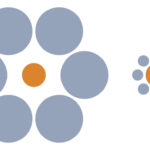
This optical illusion is simple to describe, but difficult to understand. The two orange circles in this photo are exactly the same size. However, the one on the left looks significantly smaller.
No matter how long you stare at the photo, it’s hard to wrap your head around the idea that the orange circles are truly identical.
7 The Müller-Lyer Illusion
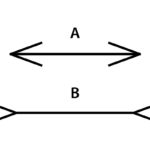
In this illusion, everything depends on the angle of the tips of the lines. These two lines are exactly the same length, but the line that ends with two “arrow tails” seems longer than the one with two “arrowheads”. It’s all a matter of perspective.
The neural nets of our brain, upon seeing this illusion, cannot help but associate it with a 3D image, making us believe that one of the lines is potentially farther than the other, making them appear to be of different lengths. Perhaps you will understand the explanation better with this picture of the Müller-Lyer effect in a non-illusion context:
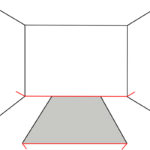
8 Moving Or Staying Still?
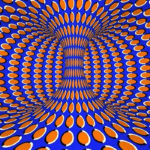
As you may have guessed, this image is in fact still. If you see it moving, your brain is playing tricks on you! As a general rule, when you look at a still object, your eyes are the ones that dart around.
The human brain is usually able to tell the difference between your eyes moving and an object moving, but the strong contrasts and the shape of this image confuse your brain. So your motion censors kick in, and you see the image moving!
9 Only One Color
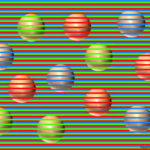
In this illusion, what you see is not what you get! Generally, when you see something in color, that thing is really that color, period. Except it’s easier than you think to fool your color perception! In this image, there are spheres behind horizontal blue, green and red lines.
The contrast created by these lines makes the spheres appear to be of many colors, but in fact, they are all absolutely identical in color and tone. The proof? Look at the same image, but without the lines that pass over the spheres:
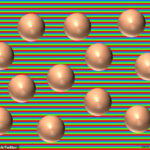
10 A Matter Of Brightness
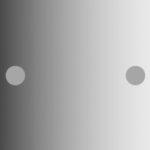
The way we perceive brightness depends a lot on the visual context in which we find ourselves. The same object will always appear darker in a bright environment, and vice versa. This phenomenon is called “simultaneous brightness contrast,” and this image is a perfect example.
The point on the darker side of the image is actually exactly the same shade as the point on the brighter side of the image. This is because we perceive brightness before our brain merges the information from the two eyes.
11 Duck Or Rabbit?
When you look at this picture, do you see a duck or rather a rabbit? Anyway, know that the image does contain a duck and a rabbit. This optical illusion was first seen in a German magazine in 1892, and was used by psychologist Joseph Jastrow.
The faster you see the second animal, the faster your brain works, and therefore, the more creative you could be. It is also proven that the first animal you see in the image can change depending on the time of year. For example, you would be more likely to see the rabbit first around Easter time!
12 Motion Illusions
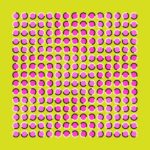
The rapid movements that our eyes make when we see something are called “saccades”. To experience them, close one eye, place a finger gently on your eyelid, then move your eye; you should feel the dart-like movements of your eye. It is on these saccades that the motion illusions rely on.
The dots of different shades of pink, and their black and white outlines placed differently around each dots, are the cause of this impression of movement.
13 Impossible Cube
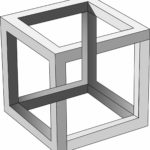
This image is actually a work of art by Dutch artist M.C. Escher for his print Belvedere. This artist specialized in non-Euclidean works that are mind bending.
With his works, it is impossible not to be mistaken; we have to look at it twice, and even three times to understand what we see, and despite everything, our brain finds no logic!
14 Hering Illusion
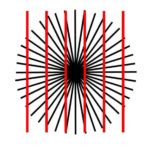
When you look at this picture, do the red vertical lines closest to the center seem parallel or slightly curved? The correct answer is that the two lines are parallel.
Created by the German physiologist Karl Ewald Konstantin Hering and first published in 1861, this illusion demonstrates that our perceptual system tends to “expand” acute angles. The black radial lines that intersect the vertical red lines cause our visual system to enhance the orientation of the contrasts between the red and black lines.
15 Lines, Rectangles… And Circles
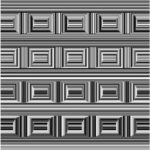
At first glance, this image contains a ton of different colored lines and rectangles. What you may not be able to see in this illusion invented by Anthony Norcia at the Smith-Kettlewell Eye Research Institute in San Francisco, however, are the 16 circles that are also there.
This illusion tricks your brain, which is constantly trying to recognize familiar objects and shapes. In this illusion, the rectangles stand out more than the circles, so your brain has trouble spotting them.
16 Adelson’s Checker-Shadow Illusion
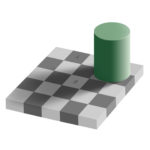
When you look at boxes A and B, it is clear that box A is darker than box B, right? However, this is an illusion because the two squares are in fact exactly the same color. It’s Edward H. Adelson who created this illusion based on the lightness constancy.
The lightness constancy represents our ability to perceive the lightness (or reflectance) of a surface as invariant, no matter if the illuminance changes or varies at a certain point. However, this illusion proves that it is possible to defeat the lightness constancy! Here’s the proof:

17 Starry Night Revisited
It is believed that Van Gogh would have difficulty recognizing this version of his famous painting, but one thing is certain, he would wonder how it is possible for it to move like this!
Here is an illusory motion that, when you look at the image and move your eyes, gives you the impression that it is moving. However, if you try to look at just one part of the image, don’t you see that it doesn’t move, or at least that the image moves less quickly?
18 Kanizsa triangle

The question “what shapes do you see in this image?” seems appropriate here, but in fact the question you should be asking is, “what shapes are in this image? In reality, the solid white triangle you see in the center of the image does not exist, nor does the triangle of thin black lines and the 3 black disks.
All of this is based on the creation of an illusion of depth, with the solid white triangle appearing to be above all other shapes. This is called modal completion, which makes edges appear to be created by boundary luminance, color or texture.
19 Appears To Move, But Is Immobile
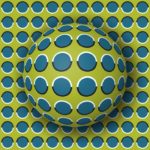
If you look at this image, you will obviously have the impression that it moves, but it is a still image!
The fact is that reality is constructed by your brain, and your brain likes to play tricks on you! Our vision actually runs 100 milliseconds behind the real world, which explains why some illusions like this one exist!
20 Do You See The Panda?
Believe it or not, this image created by Russian artist Ilja Klemencov in 2013 hides a panda in its black and white zig-zag lines! This image, entitled “They can disappear”, was created to support the charity conservation efforts by the World Wide Fund for Nature (WWF).
To see it the panda, you have to quickly move your head from left to right, or move away from your computer. To make it easier for you, however, we have made the image smaller. Now, can you see it?

